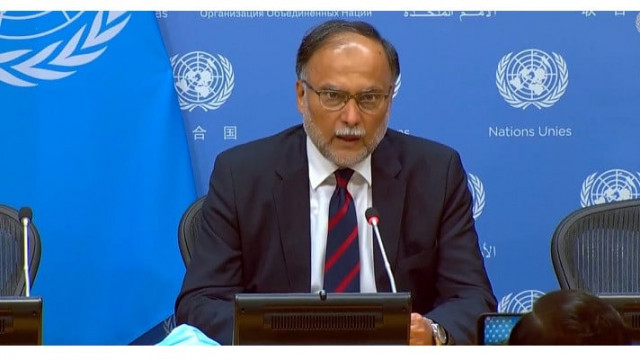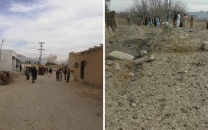Flood spending may cross $3b, says Ahsan
Planning minister says aggregate cost of calamity estimated at $30.1b

Minister for Planning, Development and Special Initiatives Ahsan Iqbal on Monday said the spending on flood recovery in the country might cross $3 billion by June this year.
Speaking at the International Conference on Climate Resilient Pakistan, co-hosted by the government of Pakistan and the United Nations in Geneva, he said the Post-Damage Needs Assessment (PDNA) -- conducted jointly by the government and its international development partners, including the World Bank, the Asian Development Bank, the European Union and the UN relief agencies, in October -- has estimated the aggregate cost of the calamity at $30.1 billion.
“This includes $14.9 billion in damages to infrastructure and $15.2 billion in economic losses,” he said. “The minimum needs identified for recovery, rehabilitation and reconstruction are estimated at $16.3 billion.”
He said of the total $16.3 billion, the government would spend 50% from its own resources, while it requested the international community to help the country with $8 billion during next three years "so that we can rebuild our damaged infrastructure in the shortest possible time".
Iqbal said the losses to GDP as a direct consequence of this disaster were projected to be around 2.2 per cent in the financial year 2022. The agriculture sector accounted for the largest decline at 0.9 per cent.
The recovery and reconstruction needs were projected at 1.6 times the budgeted national development expenditure for the financial year 2023, he added.
He said infrastructure losses included nearly 13,000 kilometres of roads, 400 bridges and several hundred dams, and over 25,000 schools and 1,500 health facilities, destroyed or damaged.
Giving the sector-wise spending details, the minister said the governance, environment and climate change sectors would require $413.5 million; agriculture, livelihoods and finance, markets, commerce, industry and tourism would require $4.35 billion; and education, health, nutrition, WASH, municipal services, energy infrastructure, transport and communication, water resources and irrigation as well as digital infrastructure would require $10.082 billion.
The long-term resilient climate infrastructure development plan, he said, was over $30 billion which involved a national flood protection programme, building new infrastructure, or re-engineering the existing infrastructure to cope with the shocks of climate-induced disasters.



















COMMENTS
Comments are moderated and generally will be posted if they are on-topic and not abusive.
For more information, please see our Comments FAQ